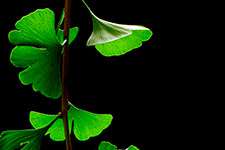Herbal materials are used globally for the prevention and treatment of various diseases. These include cardiovascular, gastrointestinal, hepatic and neoplastic disorders. In addition to the therapeutic benefits of herbal medicines, they also possess antioxidant properties that promote general health and well-being. In this review article, we discuss the antioxidant activity of several herbal materials such as Astragalus membranaceus (Astragalus), Curcuma longa (Turmeric), Echinacea purpurea (Echinacea), Emblica officinalis (Amalaki or Indian Gooseberry) , Eryngium foetidum (Foeniculum vulgare) root extract and derivatives , Ginkgo biloba leaves extract and derivatives ) Glycyrrhiza glabra (Licorice) root extract and derivatives
Astragalus membranaceus
Contents
Astragalus membranaceus is a herb that has been used in traditional Chinese medicine for thousands of years. It’s also known as Huang Qi (yellow root), Huang Qi Shen or Astragali Radix and is part of the legume family.
Astragalus is used to treat colds, coughs and other respiratory problems. It may also help strengthen the immune system by increasing white blood cell production, making it useful in treating cancer and heart disease too!
Astragalus contains antioxidants which are good for your health because they prevent free radical damage to cells–this means they help keep you healthy longer so you can live more years without getting sick or experiencing any age-related illnesses like Alzheimer’s disease.*
Curcuma longa
Curcuma longa is a perennial herbal antibiotics of the ginger family. It is also known as turmeric, and it is native to tropical South Asia. The rhizomes are boiled for several hours and then dried in hot ovens, after which they are ground into a deep orange powder commonly used as a coloring and flavoring agent.
Curcuma longa grows up to 2 meters tall with upright stems bearing clusters of flowers with yellow petals that turn orange when they mature into fruits containing numerous seeds.[3][4] Botanically called Curcuma aromatica,[5][6] its leaves are lanceolate[7] while its flowers grow on spikes.[8]
Echinacea purpurea
Echinacea (Echinacea purpurea) is a native plant of North America, and it has been used for centuries by Native Americans to treat colds, flu and other respiratory infections. It has anti-inflammatory properties that help reduce swelling in the throat or lungs. Echinacea also has potent antioxidant activity which protects cells from damage by free radicals.
Echinacea is antiviral, meaning that it helps fight off viruses such as herpes simplex 1 (HSV1), chickenpox or shingles; Epstein-Barr virus (EBV); adenovirus type 4; hepatitis C virus; measles virus; cytomegalovirus (CMV); rhinovirus type 2 and influenza A/B/C viruses.
Emblica officinalis
Emblica officinalis (amla) is a herbaceous plant belonging to the family Sapindaceae. The fruit of the tree contains a variety of bioactive compounds including antioxidants, flavonoids, phenolic acids and tannins [1]. These have been reported to have various pharmacological activities such as antimicrobial and antiviral activity [2], anti-inflammatory [3], antiallergic [4] and anticancer activities [5].
Eryngium foetidum
Eryngium foetidum is a plant species belonging to the family Apiaceae. The plant has been used as an herbal remedy for various ailments in traditional medicine systems all over the world, including China and India. Its extract has been shown to have antimicrobial activity against various Gram-positive and Gram-negative bacteria, strong antioxidant properties, anticoagulant properties and antiviral activity against different types of viruses (e.g., herpes simplex virus).
Ginkgo biloba
Ginkgo biloba is a tree that is native to China. The leaves of this plant are used as a medicinal herb, especially for Alzheimer’s disease and memory loss. Ginkgo biloba also has many other uses: it can be applied topically for circulatory problems such as varicose veins; the extract from ginkgo leaves can be taken internally (as an herbal supplement) to treat asthma, heart disease and erectile dysfunction; it may help improve blood flow in people who suffer from PM – a condition causing poor circulation in the legs due to sitting or standing still too long without moving around regularly enough.
Glycyrrhiza glabra (Licorice) root extract and derivatives.
Licorice root extract is used in the treatment of gastric ulcers, duodenal ulcers and other types of ulcers. It may also be beneficial for irritable bowel syndrome (IBS), Crohn’s disease, chronic fatigue syndrome (CFS) and viral infections such as HIV/AIDS. Licorice has been shown to inhibit Helicobacter pylori growth in vitro (in test tubes).
In addition to being an effective anti-ulcer agent, licorice also has anti-inflammatory properties which make it useful in treating inflammatory bowel diseases such as Crohn’s disease or ulcerative colitis.
Mentha piperita (Peppermint) leaf extract and derivatives.
Mentha piperita is a mint that has been used for thousands of years as a medicinal herb. It has been shown to have antioxidant, antimicrobial, and antiviral properties.
The above list is not exhaustive, but it gives you an idea of the vast array of herbal materials that can be used as natural antioxidants, antimicrobials and antivirals. Herbs are also a great source of essential oils that have powerful antioxidant properties. These extracts can be used in cosmetics and personal care products because they are safe for human use and have no side effects when applied topically on skin surfaces.

















